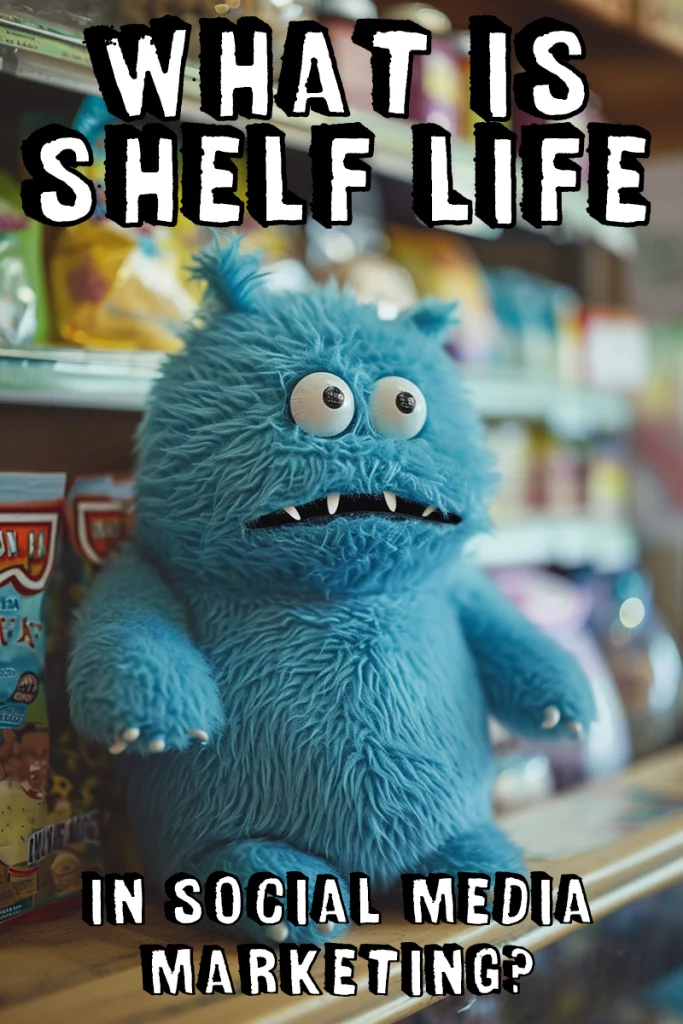
What is Shelf Life in Social Media Marketing?
Shelf life describes the amount of time that social media content will be seen by people and receive engagement before it disappears from their feeds.
Why Shelf Life Matters in Social Media Marketing
In social media marketing, the concept of “shelf life” holds significant importance. But what exactly does it mean, and why does it matter?
Picture this: You craft a compelling social media post, selecting the perfect words, pairing them with eye-catching visuals, and hitting that “publish” button. But what happens next? In the fast-paced realm of social media, content has a limited lifespan – its shelf life. Shelf life refers to the duration for which your content remains relevant, engaging, and visible on a given platform. It’s the window of opportunity during which your post garners likes, shares, comments.
Consider the nature of social media platforms. They operate on algorithms designed to prioritize fresh, timely content that resonates with users. Your brilliantly crafted post might garner attention initially, but without sustained engagement and relevance, it quickly fades into obscurity. A post with a short shelf life may generate a spike in engagement momentarily, but its fleeting nature fails to deliver lasting results or drive meaningful actions.
In contrast, content with a longer shelf life continues to resonate with your audience over time, extending its reach and driving traffic.
But how can businesses ensure that their social media content has a substantial shelf life? It boils down to crafting content that is not only engaging and relevant in the moment but also possesses timeless qualities. Here are some strategies to consider:
- Quality Over Quantity: Instead of churning out an endless stream of mediocre content, focus on creating fewer but high-quality posts. Make sure these posts offer genuine value to your audience. Invest time in research, storytelling, and aesthetics to make your content stand out.
- Know Your Audience: Understand the preferences, interests, and pain points of your audience. Tailor your content to resonate with their needs. This can help it remain relevant and compelling beyond the initial exposure.
- Tap into Trends: Keep a pulse on the latest trends, conversations, and topics buzzing within your industry. Incorporate references and hashtags to capitalize on current events and maximize the shelf life of your social media posts.
- Repurpose and Refresh: Don’t let your content gather dust after its initial publication. Repurpose it into different formats (e.g., blog posts, videos, infographics). Share it across various social media platforms to reach new audiences and prolong its shelf life.
- Engage and Interact: Foster interactions by responding to comments, addressing questions, and soliciting feedback. Active engagement not only enhances longevity but also strengthens your brand’s credibility.
By prioritizing shelf life in your social media marketing strategy, you can ensure that your efforts yield sustainable results. Remember, it’s not just about capturing attention in the moment; it’s about leaving a lasting impression. So, why does shelf life matter in social media marketing? Because it’s the difference between fleeting moments of visibility and an enduring impact.


The shelf life of an Instagram post is relatively short, with some sources stating that it can be as short as 21 hours. However, the algorithm is designed to show users the most relevant content, which means that the post’s engagement level plays a vital role.

The shelf life of a tweet is very short, with the average lifespan being around 18 minutes. With millions of tweets being posted every day, it is essential to post regularly to remain visible.

Facebook is the most challenging platform when it comes to the shelf life of posts. With over 1.9 billion daily active users, Facebook’s algorithm prioritizes fresh and engaging content. Therefore, the shelf life of a Facebook post is relatively short.

The shelf life of a post is relatively longer than other platforms, with a shelf life of around 24 hours. However, the engagement level of the post also plays a crucial role in its shelf life.